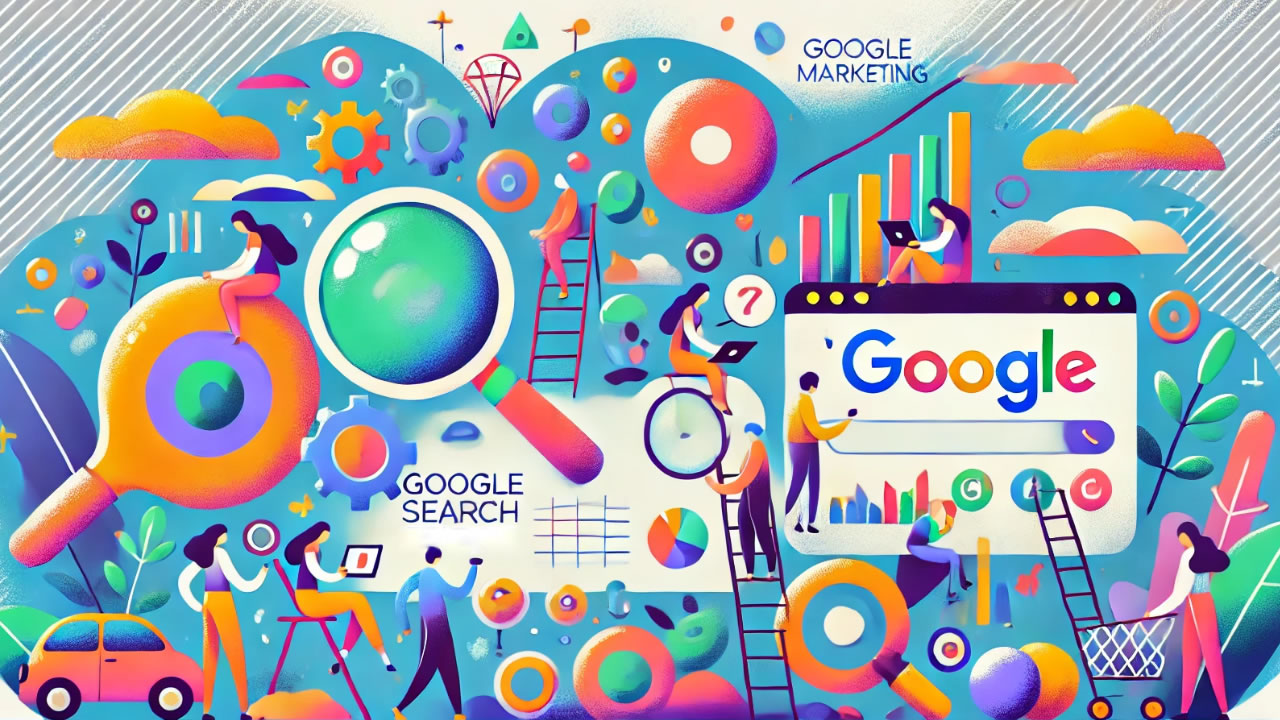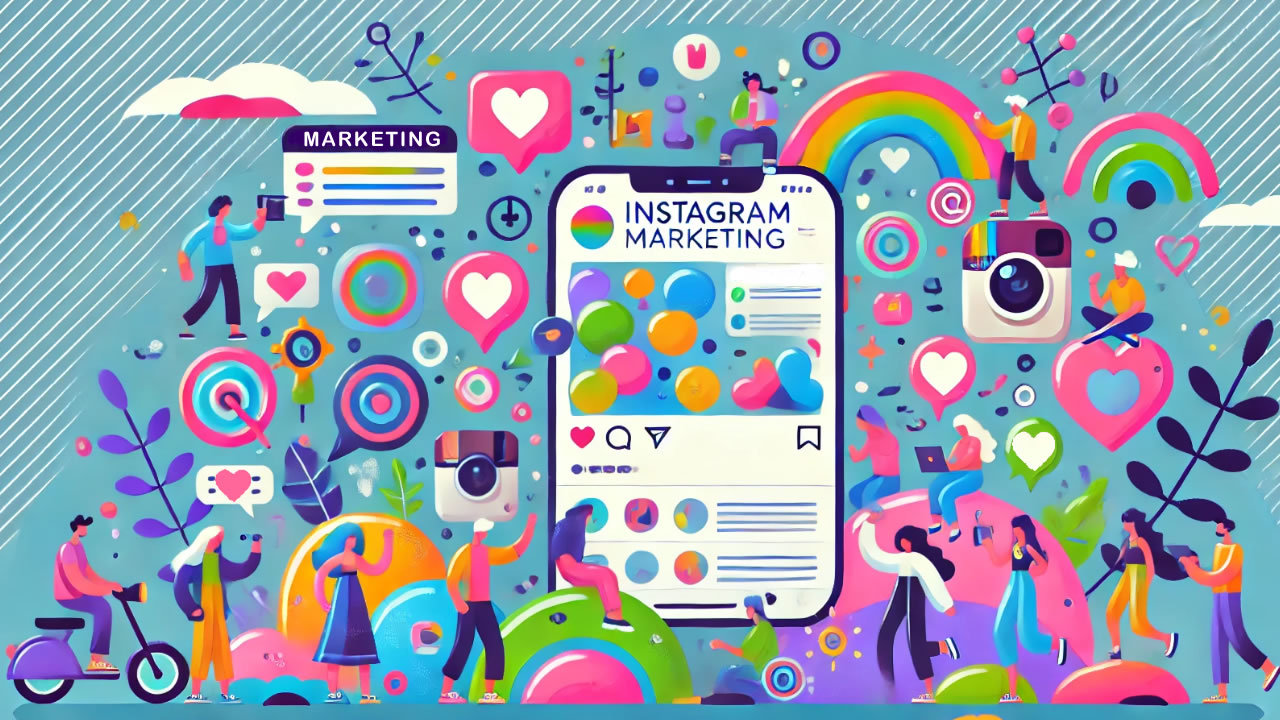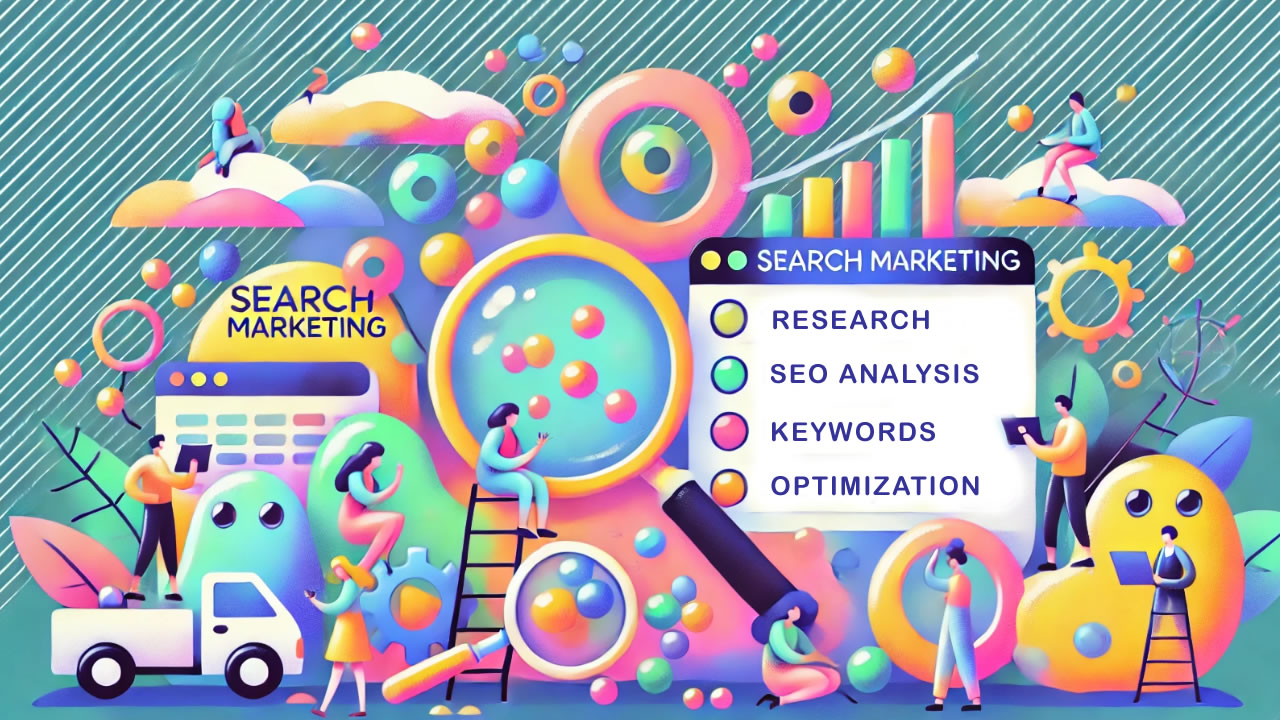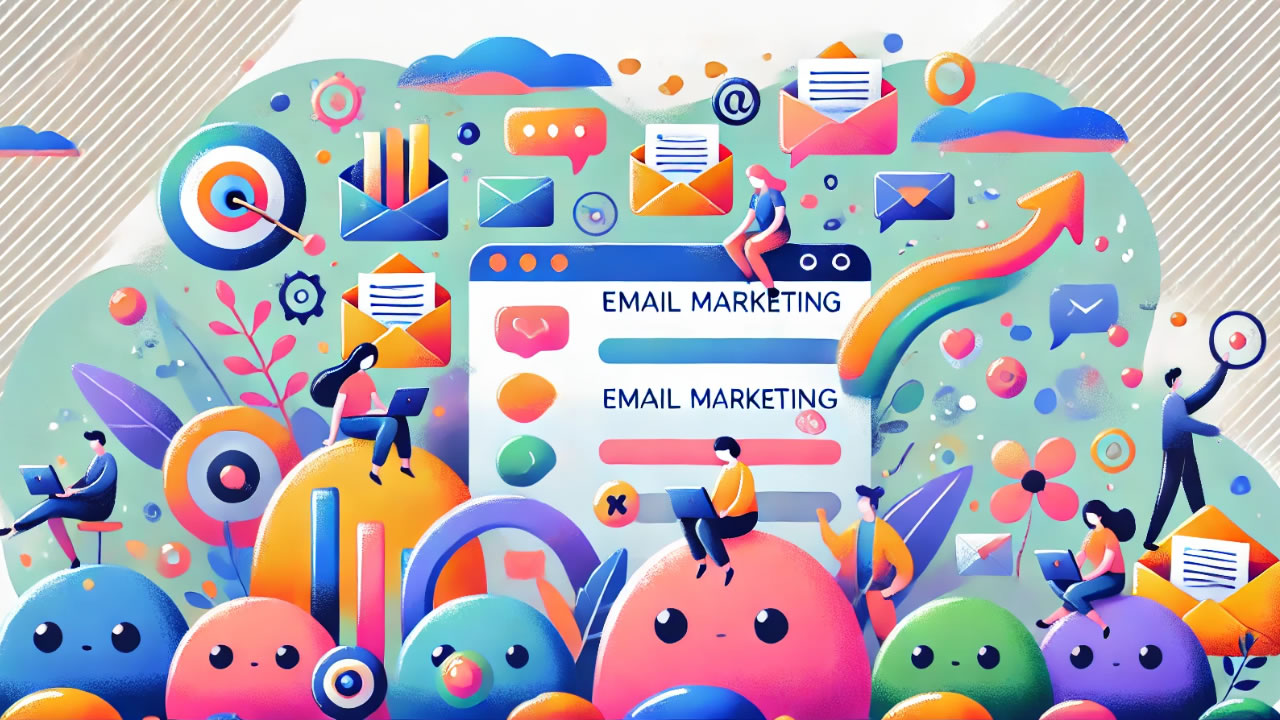In today’s competitive digital world, businesses of all sizes must harness the power of online advertising to reach new customers, grow brand awareness, and boost revenue. But with so many options, which ad platforms are the best fit for your business? From Google Ads to Facebook Ads, LinkedIn, Instagram, and Microsoft Advertising (Bing Ads), each offers unique strengths and challenges. In this blog post, we will dive into a detailed comparison of these five major ad platforms, exploring their benefits, problems, and optimal use cases for different advertising goals.
1. Google Ads
Google Ads is the largest and most popular online ad platform, allowing businesses to target potential customers through the Google Search Network and Display Network. With over 3.5 billion searches conducted on Google each day, it’s a platform that can drive massive amounts of traffic.

With Google Ads, businesses can place their ads across a wide range of Google-owned platforms and partner sites. One of the most popular placements is Google Search, where ads appear at the top or bottom of the search engine results pages (SERPs) when users search for specific keywords. These search ads are highly effective because they target users actively looking for relevant products or services. In addition to search results, Google Shopping Ads allow eCommerce businesses to showcase their products directly within search results, complete with images, prices, and reviews. Google also offers Display Ads that appear across the Google Display Network, a vast collection of over 2 million websites, apps, and YouTube channels. These ads can be visually engaging, appearing as banners or videos across a variety of sites.
Additionally, YouTube Ads provide excellent opportunities to run video ads before, during, or after videos on the platform. Businesses can also place ads on Google Maps, helping users find local services or businesses as they search for directions. Another popular placement is on Gmail, where businesses can target users by displaying ads in their email inbox, often in the “Promotions” or “Social” tabs. Discovery Ads appear on Google’s home page, Gmail, and YouTube feeds, offering highly visual ad placements that blend seamlessly with organic content. With such a wide range of options, Google Ads ensures that businesses can reach their target audience in multiple contexts across the web.
Unique Benefits
Wide Reach and Search Intent: Google Ads is perfect for businesses looking to capture users with strong buying intent. Users actively searching for specific terms (keywords) are more likely to convert. This makes Google Search Ads ideal for bottom-of-the-funnel advertising.
Highly Targeted Keyword Bidding: You can create highly targeted campaigns based on specific search terms, locations, devices, and even times of the day. This flexibility ensures that your ads reach the right audience at the right time.
Diverse Ad Formats: Google Ads supports various formats, including text ads, display ads, video ads (YouTube), and shopping ads. This allows you to craft specific Google ad types depending on your business goals, whether you want to generate awareness or drive direct conversions.
Advanced Analytics and Optimization Tools: Google offers robust tools for analyzing campaign performance, enabling businesses to measure ROI, conversions, and other metrics in real time. Features like Smart Bidding and conversion tracking offer machine-learning-based optimization.
Click here to learn more about how Google Ads can help your business.
Problems
High Competition and Cost: Due to its popularity, Google Ads can be expensive, especially for industries with high keyword competition. Small businesses may find it challenging to compete with large corporations with bigger budgets.
Steep Learning Curve: The ad platform’s breadth of options, bidding strategies, and optimization tools can be overwhelming for beginners. Managing effective campaigns often requires expert knowledge.
Click Fraud Risk: Since advertisers pay per click, click fraud—where competitors or bots click on ads to drain the budget—is a potential concern, although Google actively fights against this.
Best for
- Businesses targeting customers with high buying intent.
- Local services, eCommerce, and businesses in competitive industries.
Statistical Snapshot
Market Share (Search Ads): Google dominates with a 92.2% market share in the global search engine market.
Cost per Click (CPC): The average CPC on Google Ads is between $1 and $2, but can soar into the $50 to $100 range in highly competitive industries such as insurance, law, and finance.
2. Facebook Ads
Facebook Ads, which also includes Instagram Ads (as Instagram is owned by Facebook), is a powerful social media ad platform, with over 2.9 billion monthly active users. Facebook Ads offer robust audience targeting options based on users’ demographics, interests, behaviors, and even past interactions.

Facebook Ads offers a diverse range of ad placements across its platforms, allowing businesses to reach their target audiences in multiple locations. One of the most common placements is within the Facebook News Feed, where ads appear directly alongside organic posts, providing a seamless experience for users. These ads can be images, videos, carousels, or slideshows, making them highly versatile. Another key placement is in Facebook Stories, where full-screen ads appear between user-generated stories, offering a more immersive experience. Facebook Right Column Ads also allow advertisers to display ads on the desktop version of the site, alongside the user’s feed.
In addition to these core placements, Facebook Ads extend to Facebook Marketplace, where ads appear as users browse local listings, and within the Facebook Audience Network, which allows your ads to be shown on third-party apps and websites. Facebook Ads can also be placed within Facebook Instant Articles, offering quick-loading articles where ads are inserted between paragraphs of content. These varied placements help businesses effectively target users based on their behavior, demographics, and interests across the Facebook ecosystem.
Unique Benefits
Unparalleled Audience Targeting: Facebook Ads provide in-depth targeting options based on a wealth of user data. You can tailor ads according to age, gender, interests, location, and behaviors. You can even create Lookalike Audiences based on your current customer base to target similar users.
Visual and Interactive Formats: Facebook offers a wide range of ad formats, including image, video, carousel, slideshow, and instant experience (formerly canvas ads), allowing businesses to get creative in showcasing their products.
High Engagement: As a social media platform, Facebook excels at creating interactive and shareable content. Ads can generate comments, shares, and likes, further increasing reach organically.
Click here to learn more about how Facebook ads can help your business.
Problems
Decreasing Organic Reach: Over time, Facebook has shifted its focus towards paid ads, making organic reach for businesses on the platform more difficult. This forces businesses to pay for visibility.
Privacy and Data Scrutiny: Facebook has faced significant scrutiny over privacy concerns, which led to the introduction of tighter data privacy regulations. As a result, some targeting options have been limited, particularly with Apple’s iOS 14 privacy update.
Higher Funnel Ads Require Consistent Nurturing: Facebook excels at top-of-the-funnel awareness campaigns, but it can take longer to move leads through the funnel compared to other ad platforms. Conversions are typically more dependent on nurturing strategies such as retargeting and follow-up campaigns.
Best for
- eCommerce brands, lifestyle businesses, or those seeking brand awareness.
- Companies targeting younger, social-savvy audiences.
Statistical Snapshot
Monthly Active Users: Facebook has 2.9 billion active users, and Instagram adds another 1.3 billion users to the mix.
Average Cost per Click (CPC): The average CPC on Facebook is $0.94, making it significantly cheaper than Google Ads.
3. Instagram Ads
Though part of the Facebook family, Instagram Ads deserve their own mention. Instagram is primarily a visual platform, making it particularly effective for brands with strong visual content, such as fashion, beauty, travel, and restaurants.

Instagram Ads offer several highly engaging ad placements across the platform, allowing businesses to connect with users in multiple ways. One of the most prominent placements is within the Instagram Feed, where ads appear seamlessly among users’ organic posts. These feed ads can take the form of single images, carousels, or videos, providing businesses with plenty of creative freedom. Another effective placement is Instagram Stories, where full-screen vertical ads appear between user-generated stories, offering an immersive, engaging experience. These ads are particularly popular with eCommerce brands and have proven effective at driving conversions due to their prominent placement and interactive features, such as swipe-up links.
In addition to feed and story placements, Instagram also offers Explore Page Ads, where businesses can reach users as they browse and discover new content tailored to their interests. These ads are placed within the Explore feed, enabling advertisers to target users who are in the mindset of exploring new accounts, products, or content. Instagram recently added Reels Ads, allowing businesses to advertise within the platform’s short-form video content. These placements, combined with Instagram’s highly visual nature, make Instagram Ads a powerful tool for businesses looking to connect with audiences through impactful, creative content.
Unique Benefits
Highly Visual and Engaging: Instagram’s image and video-driven platform is perfect for businesses with visually compelling products or services. Interactive ads like Stories, Reels, and shoppable posts are highly effective at engaging users.
Access to Younger Demographics: Instagram skews towards younger users, particularly those between 18 and 34. If this is your target audience, Instagram is a must for your advertising strategy.
Integration with eCommerce: Instagram has rolled out several eCommerce features, including shoppable posts and Instagram Checkout, making it a great platform for product-based businesses looking to drive direct sales.
Click here to learn more about how Instagram ads can help your business.
Problems
Cost Can Be High for Niche Markets: While Instagram works exceptionally well for visually appealing products, it may be less effective for businesses in industries where visual storytelling is more difficult.
Requires High-Quality Creative Assets: The visual nature of Instagram requires consistent, high-quality content, which may be costly and time-consuming for some businesses.
Best for
- Product-based businesses with visually appealing products.
- Brands looking to engage with younger demographics.
Statistical Snapshot
Monthly Active Users: Instagram boasts 1.3 billion users, with 500 million using Instagram Stories daily.
Average Cost per Click (CPC): The average CPC is around $1.20, slightly higher than Facebook due to its higher engagement rates and visual nature.
4. LinkedIn Ads
LinkedIn Ads are the go-to ad platform for B2B marketing, making them uniquely suited to businesses targeting professionals, decision-makers, or those offering specialized services.
LinkedIn Ads provide several key ad placements, allowing businesses to reach a highly targeted audience of professionals. One of the most popular formats is Sponsored Content, where ads appear directly within users’ feeds as they scroll through LinkedIn, blending seamlessly with organic posts. These ads can be single images, carousels, or videos, and are ideal for promoting content, events, or services to a professional audience like real estate and insurance. Sponsored Messaging Ads (formerly called Sponsored InMail) allow businesses to send personalized messages directly to users’ LinkedIn inboxes, offering a direct and personal approach to engaging prospects. These ads are often used for lead generation or driving event registrations, as they create an opportunity for one-on-one interaction.
In addition to Sponsored Content and Messaging Ads, LinkedIn also offers Text Ads, which are simple, clickable ads that appear in the right-hand sidebar of LinkedIn’s desktop interface. These are highly visible and work well for B2B companies looking to generate leads or drive traffic to their website. Another option is Dynamic Ads, which automatically personalize ad content by pulling in the user’s LinkedIn profile picture or name. These ads appear in the right rail and are highly effective for driving engagement and building brand awareness. Lastly, LinkedIn Video Ads can be placed in users’ feeds, offering a visually engaging way to tell a brand story or showcase products and services. Each of these ad placements offers precise targeting options based on professional criteria like job title, industry, and company size, making LinkedIn a powerful ad platform for B2B marketing.
Unique Benefits
Targeting Based on Professional Attributes: LinkedIn allows businesses to target ads based on job titles, industries, company size, and other professional characteristics. This makes it perfect for B2B companies looking to reach decision-makers and executives.
Higher Quality Leads for B2B: Because LinkedIn Ads are professionally-oriented, leads tend to be of higher quality for B2B marketers. Professionals are already using LinkedIn for networking and learning about industry trends, making them more receptive to business-related offers.
Lead Generation Forms: LinkedIn offers lead generation forms that automatically fill in users’ professional details, resulting in higher form submission rates and better quality leads.
Problems
Expensive: LinkedIn Ads tend to be more expensive than other ad platforms, with a higher CPC. The higher cost may deter smaller businesses or those with limited budgets.
Narrow Audience: While LinkedIn is ideal for B2B, it’s less effective for businesses targeting consumers (B2C), limiting its use cases.
Best for
- B2B companies, particularly those offering high-value services or products.
- Businesses seeking to reach specific professional roles and industries.
Statistical Snapshot
Monthly Active Users: LinkedIn has 930 million members, though it’s worth noting that its active monthly user base is much smaller.
Average Cost per Click (CPC): LinkedIn’s average CPC is significantly higher, ranging from $5 to $9.
5. Microsoft Advertising (Bing Ads)
Microsoft Advertising, formerly known as Bing Ads, powers ads not only on Bing but also on Yahoo and AOL. Though Bing has a smaller market share compared to Google, it still reaches a substantial number of users, particularly those in niche markets.
Microsoft Bing Ads, now known as Microsoft Advertising, offers several key placements that allow businesses to reach users across Bing’s search engine and its partner networks. The most common placement is Search Ads, where text ads appear at the top or bottom of the Bing Search Engine Results Pages (SERPs). These ads are similar to Google Search Ads, triggered by specific keywords and designed to capture users who are actively searching for relevant products or services. Bing Shopping Ads are another placement option, displaying product images, pricing, and descriptions directly within the search results, ideal for eCommerce businesses looking to drive sales.
In addition to search placements, Microsoft Advertising also provides display ad options via the Microsoft Audience Network, which allows businesses to show ads on partner sites like MSN, Outlook, and Microsoft Edge. These ads can be banner ads, image ads, or native ads, seamlessly integrated into the content on these partner ad platforms. Audience Ads enable businesses to expand their reach beyond Bing’s search engine, offering advanced targeting options based on demographics, browsing behaviors, and professional data, similar to LinkedIn. Together, these placements offer robust opportunities to reach users not only within Bing but across Microsoft’s wider ecosystem.
Unique Benefits
Lower Competition and Cost: Microsoft Advertising typically has lower CPCs than Google Ads, mainly due to less competition. This makes it an attractive option for small and medium-sized businesses.
Demographics: Bing users tend to skew slightly older, with a significant portion being 35 and older, making it ideal for businesses targeting this demographic.
Integration with Microsoft Products: Ads can appear across multiple Microsoft products, such as Windows and Cortana, providing a wider network for visibility.
Problems
Smaller Audience: While Bing Ads offer cost savings, the platform’s reach is much smaller compared to Google, with only 6.5% of the global search market.
Less Robust Tools: Though Microsoft has made improvements, Google Ads still offers more advanced features, tools, and integrations, making it the preferred choice for many businesses.
Best for
- Small and medium-sized businesses looking for affordable PPC advertising.
- Businesses targeting older demographics.
Statistical Snapshot
Market Share (Search Ads): Bing has around 6.5% of the global search engine market, but in the U.S., it captures 36% of desktop search traffic.
Average Cost per Click (CPC): CPCs are lower, with the average being $1.54, making it cheaper than Google Ads.

Ad Platforms Side-by-Side Comparisons
| Ad Platforms | Unique Benefits | Problems | Best for | CPC Range |
|---|---|---|---|---|
| Google Ads | Massive reach, advanced targeting, strong buying intent | Expensive, high competition, steep learning curve | Businesses targeting high intent customers | $0.25 – $40+ |
| Facebook Ads | Precise audience targeting, social engagement | Limited organic reach, complex privacy rules | E-commerce, brand awareness, lifestyle brands | $0.31 – $0.94 |
| Instagram Ads | Visually engaging, younger audience, shoppable features | High cost for niche markets, need for visuals | Visually appealing products, younger audience | $0.73 – $1.45 |
| LinkedIn Ads | Professional targeting, B2B-focused | Expensive, narrow audience | B2B companies, high-value products or services | $0.50 – $9.86 |
| Microsoft Ads | Lower cost, older demographic targeting | Smaller audience, less robust tools | SMBs, businesses targeting older demographics | $0.15 – $1.54 |
How To Choose The Right Ad Platforms For Your Campaign
Each ad platform offers unique opportunities and challenges. The best approach is to diversify your ad spend based on your business goals, audience demographics, and budget.
Google Ads: Best for capturing high-intent users with search ads. Ideal for businesses with a larger budget aiming for conversions and sales.
Facebook Ads: Use for top-of-the-funnel campaigns and brand awareness. Pair with retargeting strategies for higher engagement.
Instagram Ads: Leverage visual storytelling for e-commerce brands, especially if targeting younger audiences.
LinkedIn Ads: Best for B2B businesses aiming to target professionals and executives. The higher CPCs are worth it for the lead quality.
Microsoft Ads: Consider for lower-budget campaigns aimed at an older audience or for small businesses seeking affordable PPC options.
If you would like to read more platform comparisons, check out Social Ads: Comparing Facebook, Instagram, TikTok, and Reddit
Start Advertising Your Business
Schedule A CallRead more about Advertising

How To Choose The Right Google Ad Type For Your Business

Website Checklist: What to Do Before You Begin an Ad Campaign
